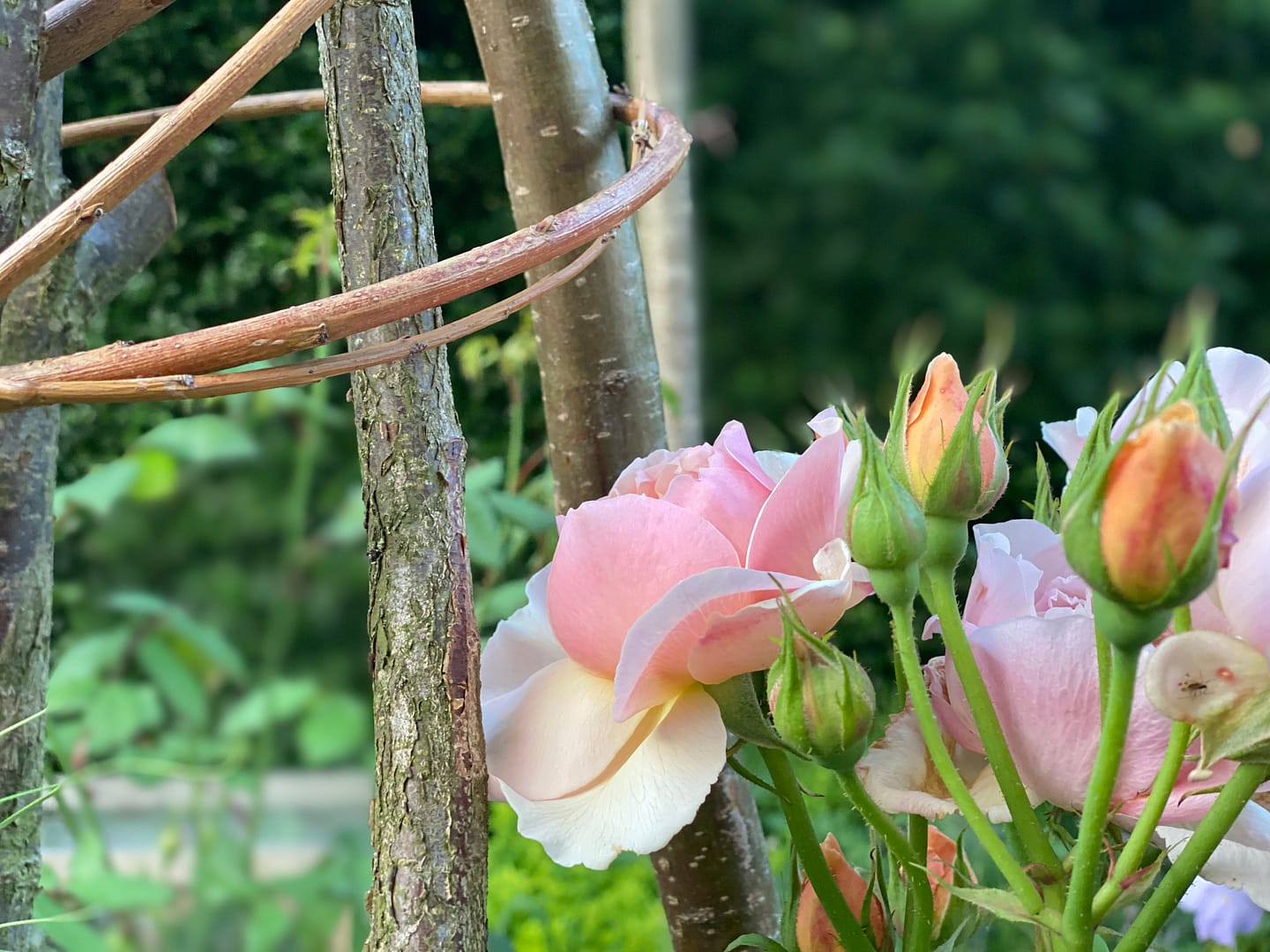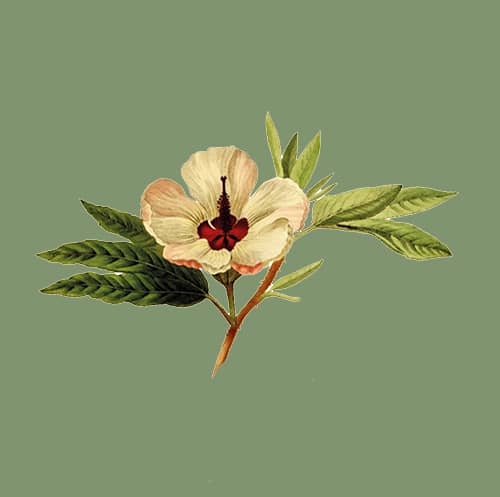A horticultural and historic symbol of romance and love, the charming Rosa is a floral beauty that projects its radiance through flourishing flowerheads and strong stems.
Available in a variety of colours and over three hundred different species, roses are a truly divine perennial plant. Prized for their aesthetic virtues, careful pruning not only aids the health of your roses but helps to encourage masses of blooms to come.
So, we thought we’d share with you some handy tips from our very own Oxfordshire Gardener horticulturists on how they snip roses into shape at this time of year. Not only are our team experienced in planting new roses and trained to renovate and rejuvenate all types of established roses, but they also have achieved the David Austin Rose Pruning Certificate.
Pruning is one of the key elements in keeping your roses in tip-top shape, as it both promotes the growth of new blooms but also helps the plant maintain its striking structure. Our horticulturists advise that pruning should take place sometime between now and the beginning of the springtime (late February). So, what better time to get started than this week!

How to prune shrub roses
Do you want to know the secret to the perfect rose? The most vital trick to maintaining a shrub rose is to prune it consistently throughout its lifetime. By pruning the rose this allows the plant to regain its healthy structure in time for bloom. So pick up your trusty secateurs and a pair of thornproof gloves as we guide you through how to best prune your roses throughout their lifetime, step by step.
The young rose:
When handling a young rose in its first year, you must make sure to take extra care as the rose will still be settling into the area and burying its roots in order to ensure its stability for eventual maturation. Therefore, these young roses should only be delicately pruned (after their first year of flowering). The first thing you need to check is the rose is still upright and firmly planted in the ground. If not, firm up the soil first by treading down the soil to make it more compact. Now you’re ready to prune.
Firstly take-away any spent blooming stems by approximately 7-12 centimetres. If you notice any other solid stems that seem to stand out from the rest of the plant’s growing form these should also be reduced.
Next, check for the infamous 4 D’s of dead/dying, diseased, damaged or disorderly stems (we use the term ‘disorderly’ to describe stems that are crossing and rubbing or growing in wrong direction i.e. they aren’t creating a good form). This is prime horticultural work for many plants to keep healthy and promote new growth. Once these are removed you can then move onto the final stage; removing any old leaves from the season. Leaving foliage on your rose can allow for disease to fester and can potentially threaten the future health of your roses.
The growing rose:
If your shrub roses have reached around 2 years old, they’ll still be continuing to grow to their full maturity, establishing their strong root system, so it’s now that more formative pruning can begin in order to define the plant’s future shape.
Aim to reduce each stem by approximately a third, making each cut on the diagonal just above the node/joint. As before, continue cutting any stems that seem to stand out (known as leaders from the rest of the plant) so you end up with no straggly stems. Once this step is complete, you can then continue to prune the rose just as you pruned your previous young rose. By removing the 4 D’s and any unnecessary leaves.
The matured rose:
Once your rose is around 3 years old, it should be sufficiently mature to allow you to alter both the form and proportions more freely than previous pruning years. We find that many people are a little nervous about pruning roses, pruning them too lightly (more akin to deadheading than formative pruning).
There are three ways that you can style your rose. If you desire a taller rose shrub then you should take off less than one-third of the growth. If you would like your shrub to stay the same size, then you should make sure to leave around two-thirds of each stem. But if you would like your shrub to be smaller, then we recommend taking away at least a half of the stems length.
Once you have decided the shape in which you desire your shrub roses to be, then you can start following the previous pruning stages that you have carried out at the beginning of your roses’ life. (However, of course, the amount you cut back the stems now depends on what sort of shape you would like your rose shrub to be).


The established rose:
When your rose is over 4 years of age, you can continue to prune your shrub just as you did when it was a matured rose. This way your roses will be rejuvenated or getting unwieldy and return brighter and more beautiful every year.
How to prune climbing roses
Pruning climbing roses is a little different due to their position and structure, however, our horticulturalist’s hacks guarantee to make it a carefree task.
Firstly, stand back and study the structure. Look for the new, strong shoots which will be most pliable as they are young. Gently encourage them down to lay as close to horizontal to achieve a lateral stem of flowers, then tie-in to your support framework.
Next, find those woody stems that have grown out at odd directions, such as outward into the garden and away from the structure you wish them to climb up. Look for last year’s flowering stems and prune these back to approximately 10-15 centimetres from the main stem, as they flower on new growth. Then again as before, make your way around the plant trimming off the 4Ds to make way for new growth.
And finally before you finish, you will see a few new and healthy stems that will reward you by being tied in. We use twine or Soft-tie for tying-in these stems to the support system/framework in order to avoid damaging the stems.
For the final flourish, if you’re looking to give your roses the ultimate treatment, mulch with a well-rotted manure to give your garden an extra dose of TLC.
Once you’ve finished making your final cuts make sure to give those trusty secateurs a good clean and oil too!

What to do when planting a bare-root rose
Bare-root roses produce truly beautiful blooms, but how do you plant them so that they continue to flourish superbly every season? We asked our horts to give us their best tips.
As long as the ground isn’t frozen over or flooded, the best time to plant a bare-root rose is between November-April (so let’s get planting).
What you will need:
- 1 spade
- 1 fork
- Soil improver
- The bare-root shrub rose (prepared in a bucket of water)
- Mycorrhizal fungi
- 1 watering can
- A pair of gardening gloves
Location:
Bare-root roses (or potted roses), in general, thrive best in a location that receives at least 4 hours of sunlight each day (though the more sun, the better for the best results, though some varieties fare better with a little shade than others).
Choose an area with generous space to grow so that the health of the roots does not deteriorate through the close proximity of other plants.

How to plant:
Give your rose a good drink for a couple of hours in a bucket of water with all the roots covered. Then fork over the soil in preparation for your freshly hydrated rose by removing any weeds and stones from the soil. Once the area is prepared dig a planting hole of around 40 x 40 centimetres. Once you are satisfied with your hole, reach for your fork again and fork over the soil to aerate and loosen the earth. This allows the roots to work their way through the ground more easily.
Making sure that the planting hole is deep enough so that the bottom of the stem is a touch below the top of the hole. Remove the rose add in about 2 spades of soil improver, forking it through a little.
Whilst holding the rose over the hole, sprinkle some mycorrhizal fungi all over the roots and sides of the hole to encourage strong roots.
Once you have prepared the bare root rose, place it in the planting hole, again making sure that the union is a few inches beneath the top of the soil. Fill in the hole with soil around the rose and on use your foot or hands to gently firm up the soil to ensure rose sturdily planted and not likely to rock around in the wind.
Finally, give your rose a good water and now your plant is all nestled in and ready to grow.
Do you have a garden full of roses desperately yearning for some TLC?
Our expert horticulturists can help them flourish. Talk to us to find out how.


